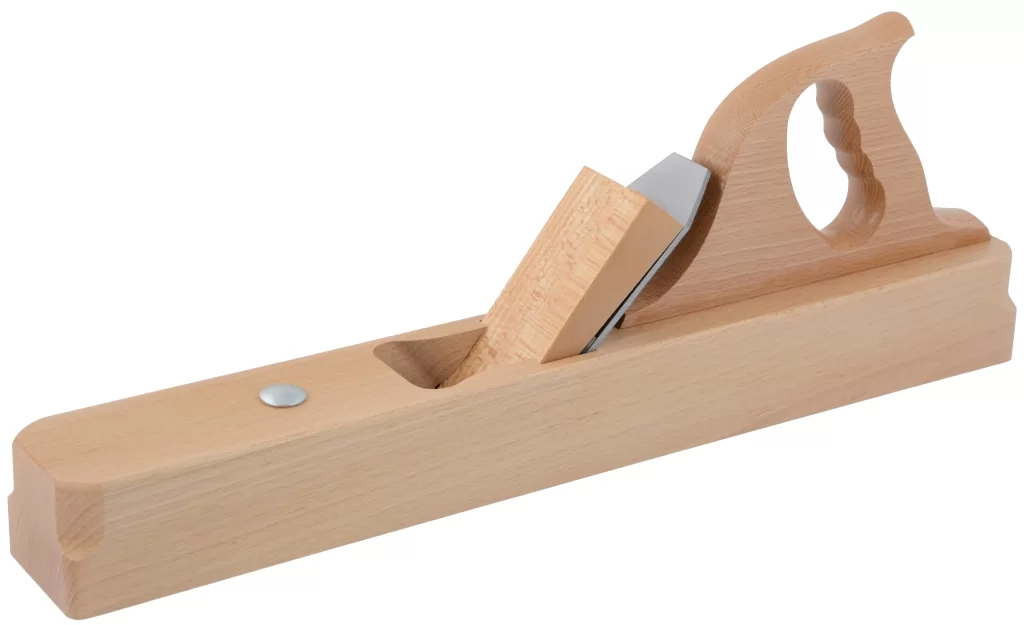
Compare planer and jointer
When working with wood, many tools of manual and electronic type are used. A planer and jointer are among the most common among wood craftsmen. In order not to spoil the work, it is important to have a clear understanding of the specifics of each of them. How high-quality will the result of processing the product be and how is the planer and jointer generally used? Our experts will advise.
Planer: features, types, application

A planer is a planing tool, the main purpose of which is wood processing. It is actively used in carpentry. This is one of the best solutions for shaping a suitable wood surface. The planer is used to create all kinds of wooden joints such as tenon-groove and processing blanks to the specified parameters.
The design of the planer is very simple and is represented by a block with a perfectly flat sole. It is made of wood or metal with handles fixed at the ends. The front one is used for gripping and secure fixation of the tool, the back one makes pushing movements more convenient and efficient.
At the back of the product there is a clamp for fixing a steel knife, which extends through a slot in the block. There are 2 main types of mechanical planers. There are devices that are complex in their design, but at the same time easy to use devices, and there are also simple ones, where an ordinary wooden wedge plays the role of a clamp. The main criteria for choosing a suitable planer: the material and sharpness of the knife.
ON A NOTE. Sharpening a knife for a planer is always carried out at a certain angle. It depends on the material to be processed. The fact is that different types of wood differ in hardness.
Unlike many carpentry tools, planers are extremely versatile. Moreover, the design of each type of manual planer was created specifically to perform certain types of work. Universal designs simply do not exist. Planes can be divided into 2 groups:
-
Direct planing;
-
Figure planing.
The first category includes:
-
Single — designed to align workpieces in order to obtain a smooth surface. Equipped with a straight blade with a rounded edge;
-
Double — similar to single, but have an additional knife that breaks chips. Ideal for the final leveling of the outer layer of wood (wood treated with a double planer does not have to be sanded with sandpaper);
-
Sanders — equipped with a blade fixed at an angle of 500. Its main task is to achieve an absolutely smooth surface;
-
Sherhebeli — equipped with a rounded blade set at an angle of 450 to the sidewall of the sole;
-
Jointers — ideal for finishing large-area products, equipped with a long block;
-
Tsinubeli — equipped with a serrated knife that creates a corrugated surface (the best option for gluing two elements);
-
Peeling — the sole is made in the form of a metal grater — this type of planer is not equipped with a knife — it is suitable only for leveling drywall ends.
Curly planing planes are not suitable for leveling wood blanks: their task is to process protrusions, edges, create grooves, etc. With the advent of power tools, curly varieties of the tool gradually disappeared into oblivion, but are still occasionally found in carpentry workshops.
Jointer: device, application

As you can already understand, a jointer is a kind of planer. Accordingly, this is a device for processing wood surfaces. The mechanical type of jointer is a simple design, represented by 3 elements: a body, a knife and a handle. The body is most often made of wood, less often of metal.
The electronic version differs from the mechanical one in a more complex design:
-
Persistent handle — transmits force;
-
Bell — connects a vacuum cleaner that allows you to quickly collect wood chips during the processing of the product;
-
Hand screw — allows you to change the depth of planing of the product;
-
Control buttons — used to set the necessary parameters;
-
Side stop — makes it more convenient to adjust the width of the surface;
-
Sole — in contact with the surface of the wood;
-
Protective cover — prevents the possibility of damage, etc.
The classification of jointers is very diverse, but, in general, 2 varieties can be distinguished:
-
Manual — an easy-to-use device, which is distinguished not only by its efficiency in operation, but also by its low price;
-
Electric — easy to operate and more efficient than the manual version. Has a high price.
ON A NOTE. On sale there are mini jointers used exclusively in domestic conditions: they are convenient due to their modest dimensions and good performance. Professional jointers are used in industry. They are high performance and durable.
When using a jointer, several rules must be observed that will ensure the safety of the user. First, you should carefully fix the workpiece. Secondly, you need to use protective clothing and gloves. Thirdly, you can not place your hands near the cutting zone.
Comparative characteristics
-
Since the jointer is one of the varieties of the planer, there are not so many differences between them. Both products are used to remove «surplus» material from workpieces in order to obtain a perfectly flat surface. The main difference lies in the degree of processing of the product..
-
The planer is used as a tool for primary processing. The thickness of the removed wood layer, as a rule, is set when setting up the equipment. Planing of wood, first of all, is intended for elimination of knots, mounds and other irregularities. The design itself is always simple: 2 elements — a block and a knife. -
Jointer, as a rule, has a longer body, providing a very tight pressing of the product to the treated wood. Most often, the jointer is equipped with two blades, which allow for finishing.
Добавить комментарий
Для отправки комментария вам необходимо авторизоваться.